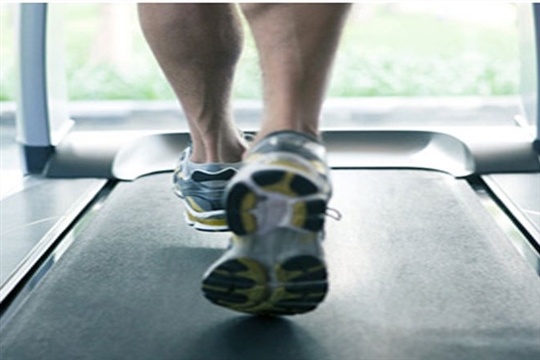Choose the correct running shoe...........

http://www.upandrunning.co.uk/the-wet-foot-test/
Try the wet test.....
It is so important now that you are up and running to check your gait.
What is the Running Gait?
The running gait is a unique set of actions and reactions that your foot performs while in motion to support, cushion, and balance your body.
What is Pronation?
Pronation is simply a normal foot in motion, from foot-strike on the outside of the heel through the inward roll of the foot. Pronation occurs as the foot rolls from the outer edge to the inner edge. Everyone pronates, and the initial pronation is considered an important and healthy response to the intense amount of shock imposed upon the foot and is integral to propelling you forward. If the foot pronates too much or too little and does so frequently, several biomechanical problems may result that will cause a decrease in performance and increase the possibility of injury.
What is Over-Pronation?
Over-pronators generally land in a pronated position and continue to roll significantly inward as they go from heel strike to toe off. They exhibit excessive inward motion and are best served with shoes offering medial (inside edge) support via a Medial Post or shoes featuring the ROLLBAR® technology. Motion Control shoes offer the highest level of over-pronation correction. Stability shoes usually incorporate either the TS2® Transitional Support System, a Medial Post to help prevent over-pronation, or simply offer a high level of overall support.
What is Under-Pronation?
Under-pronators generally land in a significantly supinated position and experience very little pronation, meaning from impact to toe-off their foot rolls inward less than the norm. They do not have enough inward motion and therefore can benefit from neutral cushioned-based shoes, which allow and promote the foot to follow the natural pronation movement.
How to Tell What I Am?
The easiest way to determine your running gait is by looking at one of your used pair of shoes.
Place the shoes side by side on a table, toes pointing away from you. Look at the shoes from eye-level and you should be able to see one of three scenarios...
| Over-Pronator | Neutral Gait | Under-Pronator |
| (Left Foot) | (Left Foot) | (Left Foot) |
| If the shoes have a slight or significant inward tilt, then you exhibit an over-pronation running gait. | If the shoes appear to be neutral and do not tilt inward nor out, then you exhibit a pronation-neutral running gait. | If the shoes have a slight or significant outward tilt, then you exhibit an under-pronation (supination) running gait. |